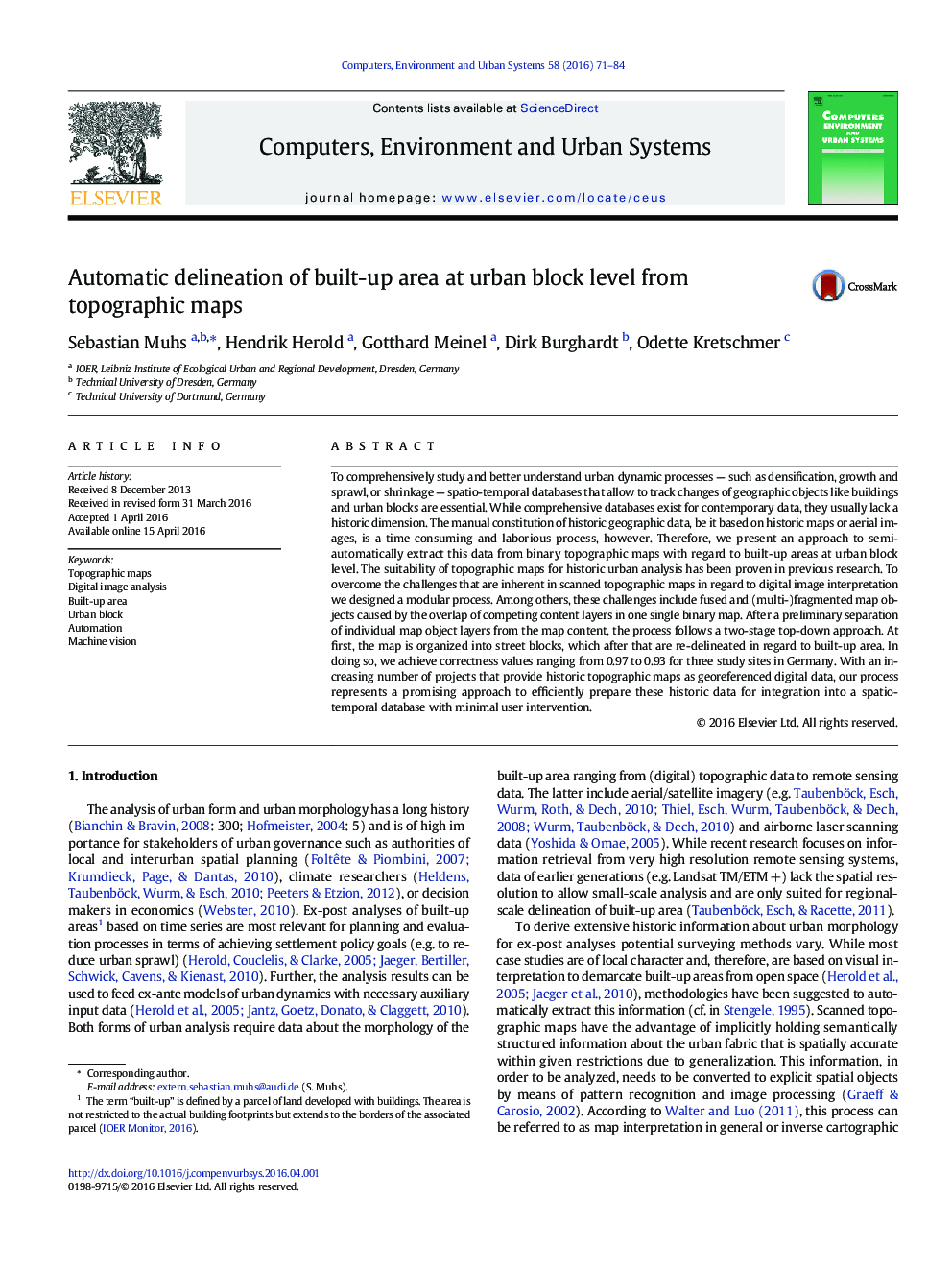| Article ID | Journal | Published Year | Pages | File Type |
|---|---|---|---|---|
| 6921891 | Computers, Environment and Urban Systems | 2016 | 14 Pages |
Abstract
To comprehensively study and better understand urban dynamic processes - such as densification, growth and sprawl, or shrinkage - spatio-temporal databases that allow to track changes of geographic objects like buildings and urban blocks are essential. While comprehensive databases exist for contemporary data, they usually lack a historic dimension. The manual constitution of historic geographic data, be it based on historic maps or aerial images, is a time consuming and laborious process, however. Therefore, we present an approach to semi-automatically extract this data from binary topographic maps with regard to built-up areas at urban block level. The suitability of topographic maps for historic urban analysis has been proven in previous research. To overcome the challenges that are inherent in scanned topographic maps in regard to digital image interpretation we designed a modular process. Among others, these challenges include fused and (multi-)fragmented map objects caused by the overlap of competing content layers in one single binary map. After a preliminary separation of individual map object layers from the map content, the process follows a two-stage top-down approach. At first, the map is organized into street blocks, which after that are re-delineated in regard to built-up area. In doing so, we achieve correctness values ranging from 0.97 to 0.93 for three study sites in Germany. With an increasing number of projects that provide historic topographic maps as georeferenced digital data, our process represents a promising approach to efficiently prepare these historic data for integration into a spatio-temporal database with minimal user intervention.
Related Topics
Physical Sciences and Engineering
Computer Science
Computer Science Applications
Authors
Sebastian Muhs, Hendrik Herold, Gotthard Meinel, Dirk Burghardt, Odette Kretschmer,
